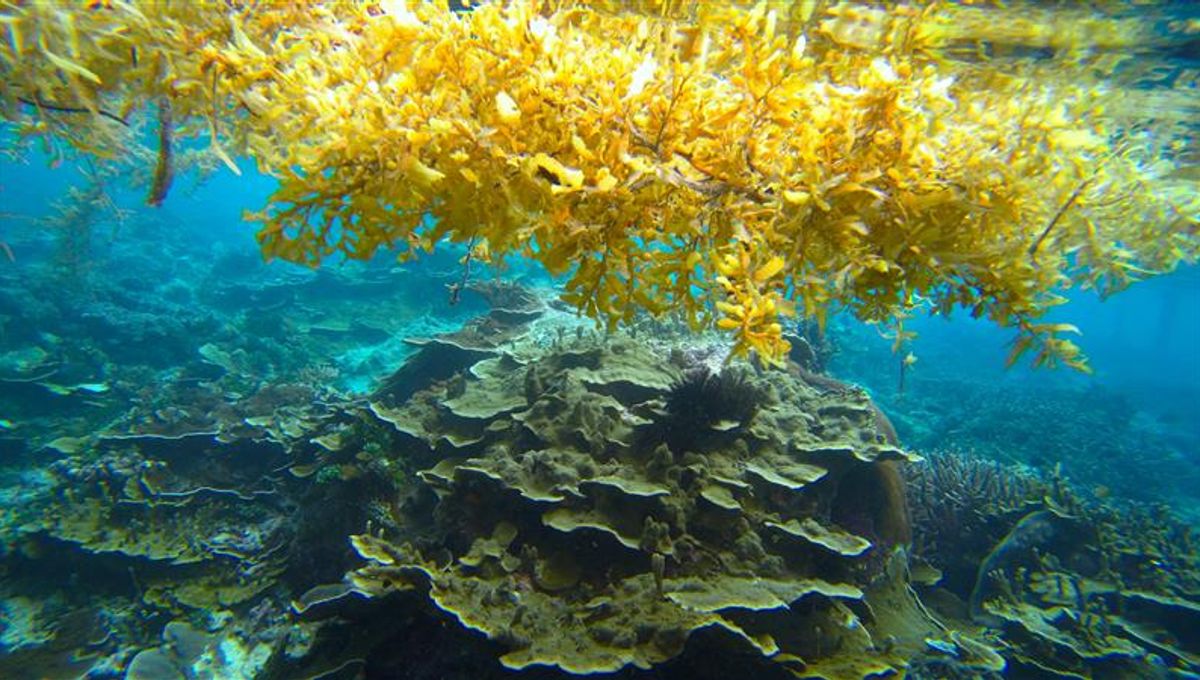
There is a region of the North Atlantic Ocean that is unusual – it’s a sea that has no coastlines. The Sargasso Sea is characterized by its unique boundaries defined by ocean currents rather than land. It’s also a sea characterized by its natural, and unfortunately unnatural, accumulations of algae and detritus.
The Sargasso Sea: An ocean of its own
The Sargasso Sea is enclosed by four currents: the North Atlantic Current to the north; the Canary Current to the east; the North Atlantic Equatorial Current to the south; and the Antilles Current to the west. These currents, which are known as ocean gyres – a large system of circular ocean currents formed by global winds and the Earth’s rotation – effectively trap the body of water within them.
The ocean’s name comes from its special seaweed that exists within its waters. Sargassum, as it is called, is a brownish-yellowish mass of floating macroalgae that forms a unique marine environment. In fact, the presence of this floating mass within the sea has earned it the title of a “golden floating rainforest”, which is a habitat, foraging and spawning ground, and a corridor for migration.
For example, endangered European eels migrate to this distant sea to breed, and various species of whale, such as sperm and humpbacks, migrate through it during their transoceanic journeys.
Sargassum has been known about for a long time. It was actually referenced by Columbus during his expedition diaries from 1492. His encounter with the floating mass, so the story goes, caused considerable fears among his crew. Their ship, the Santa María, became stranded in the ocean for three days due to windless conditions (doldrums). The crew became concerned when they saw the seaweed, usually a sign of land, which they worried would entangle them and drag them underwater. This story apparently helped secure the Sargasso Sea’s reputation as a potentially hazardous and mysterious place.
This reputation was not helped by its association with the dreaded Bermuda Triangle, which exists within the southwestern area of this unusual sea.
Despite its importance for marine life, the Sargasso Sea is under threat from human activity (of course). Not only do ships cause damage to the environment with a mix of noise and chemical pollutants, but the currents that isolate it also drag huge accumulations of plastics and other human debris into the waters.
Because of the circulating motions of the oceanic gyres, plastic swirls into the Sargasso Sea, where it has formed a massive island known as the North Atlantic Garbage patch, which is estimated to be hundreds of kilometers in size and to have a density of 200,000 pieces of trash per square kilometer.
Although there are various organizations committed to protecting this unique sea, cleanup efforts are hindered by the substantial challenges associated with marine plastics. Unfortunately, this means that plastic will likely remain a significant threat to life in this area.
Source Link: This Is The Only Sea In The World That Doesn't Touch Any Coastlines